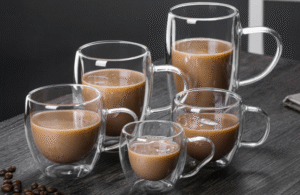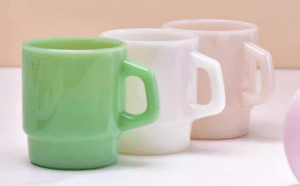The market is flooded with stainless steel bottles. Choosing the wrong grade or feature set could leave you with a product that fails, tarnishing your brand's reputation for quality.
The best stainless steel bottle for 2025 uses 18/8 food-grade stainless steel for safety and durability. It should also feature double-wall vacuum insulation for performance and be made through a transparent, sustainable supply chain, making it a truly eco-friendly choice.
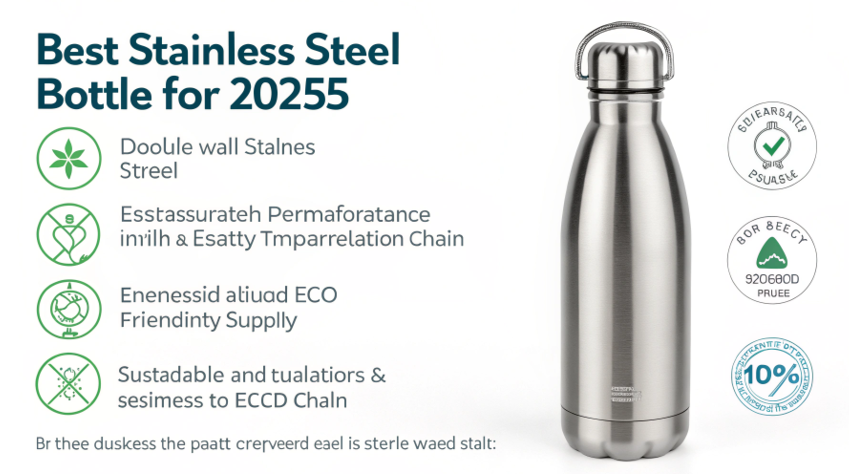
I’ve guided dozens of brands, including ambitious developers like you, through this exact process. The secret isn't just about picking a product; it's about understanding the core components that create lasting value. Making a great water bottle means knowing what's inside, how it's made, and why it matters to the end user. Let's break down what's really important so you can develop a product that stands out and earns customer loyalty.
What is the Best Quality Stainless Steel for a Water Bottle?
You see terms like "304" and "18/8" but they can be confusing. If you can't tell them apart, you risk selecting an inferior material that could rust or alter taste.
The best quality stainless steel for water bottles is Type 304, also known as 18/8 stainless steel. This grade offers the perfect combination of durability, rust resistance, and food-safe purity, ensuring it won't leach chemicals.
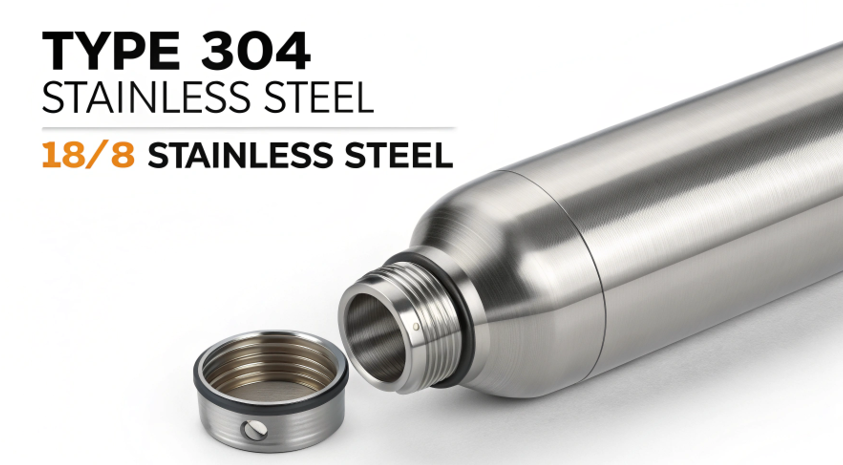
This isn't just a random set of numbers; it's the gold standard for a reason. As a product developer, choosing this specific grade is your first and most important decision. I once had a prospective client show me a sample from another factory. It was cheaper, but it felt off. We discovered they used a lower-grade steel. Within weeks, tiny rust spots appeared inside. Choosing validated 18/8 steel is the first line of defense for your brand's quality.
Understanding the Numbers
The secret to quality is in the alloy composition. "18/8" tells you exactly what you're getting.
| Grade | Composition Highlights | Why It Matters for Drinkware |
|---|---|---|
| 18/8 (304) | 18% Chromium, 8% Nickel. | The Gold Standard. Chromium prevents rust. Nickel provides durability. It's non-reactive and food-safe. |
| 201 Series | Lower Nickel, Higher Manganese. | A Red Flag. Cheaper but prone to rust and corrosion, especially with acidic drinks. Avoid it. |
| 18/10 (316) | 18% Chromium, 10% Nickel, + Molybdenum. | Marine-Grade. Superior corrosion resistance but is more expensive and usually overkill for daily use. |
Sticking with 18/8 (or Type 304) stainless steel is the smartest move. It provides the exact performance and safety features that customers expect from a premium water bottle. It hits the perfect balance between cost, durability, and health, making it the most reliable choice for a mass-market product. Don't be tempted by the lower cost of 200-series steel; the long-term damage to your brand from failing products is never worth the small initial savings.
Are Stainless Steel Water Bottles Genuinely Eco-Friendly?
Your brand promotes sustainability, but you hear about the energy used to produce steel. This makes you question if you're really making an eco-friendly choice for your customers.
Yes, stainless steel bottles are highly eco-friendly when viewed over their entire lifecycle. Their extreme durability allows them to replace thousands of single-use plastic bottles, drastically reducing long-term waste and pollution.

I have toured steel factories. The production process is indeed energy-intensive. But focusing only on that misses the entire point. It's like judging a car's efficiency by looking only at the factory that built it, not the miles it will travel. The true environmental impact of a product is measured over its lifetime of use. That is where stainless steel bottles win, and it's not even a close contest. This is the story you need to tell your customers.
The Power of Reusability
The initial production energy is only a small part of the environmental equation. The real story lies in what happens after the bottle is made.
- Lifecycle vs. Production: A single-use plastic bottle requires energy for oil extraction, manufacturing, and transport, all for an item that is used for minutes. Its lifecycle is incredibly short and wasteful. The stainless steel bottle has a higher upfront energy cost, but this cost is spread out over years, or even a decade, of continuous use.
- Waste Reduction: The average person uses over 150 plastic water bottles per year. A single stainless steel bottle can prevent all of those from ending up in landfills or oceans, where they take centuries to break down.
- Recyclability: At the end of its very long life, stainless steel is 100% recyclable. It can be melted down and reformed into new high-quality products without any loss of quality.
For a product developer like Emily, the key is to communicate this long-term value. Durability is the ultimate eco-friendly feature.
What Is the Healthiest Water Bottle to Drink From?
Customers are afraid of BPA, plastics, and aluminum linings. It's hard to know which material is truly the safest and how to communicate that benefit clearly and confidently.
Food-grade stainless steel and glass are the healthiest materials for a water bottle. Unlined 18/8 stainless steel is completely inert, meaning it won't leach chemicals, and does not require a protective liner like aluminum bottles do.
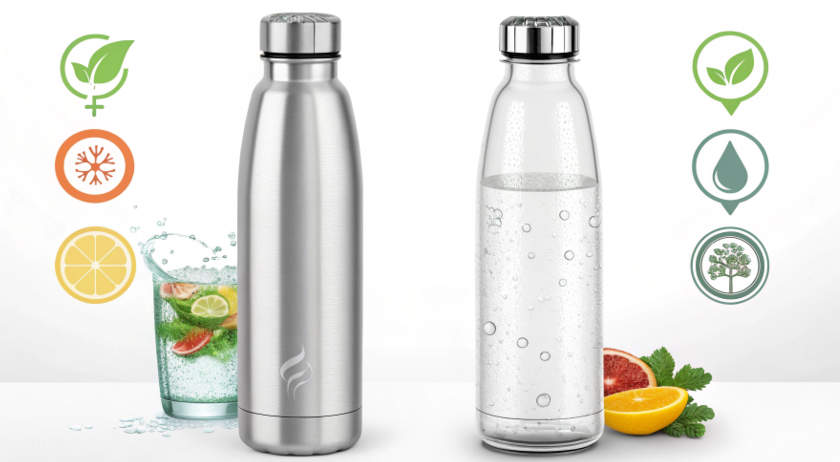
Many of my clients, especially those new to drinkware, don't realize the critical difference between stainless steel and aluminum bottles. This is a huge point of confusion in the market. Aluminum looks similar on the outside, but it's a completely different story on the inside. Understanding this distinction is key to creating a product that is genuinely safe and allows you to educate your customers on why your product is the superior, healthier choice.
Why 'No Liner' Is a Key Feature
The health advantage of stainless steel lies in its simplicity.
- Stainless Steel vs. Plastic: Plastic bottles are a huge concern for many consumers. Even when they are labeled "BPA-free," questions remain about other chemical plasticizers that could potentially disrupt hormones or have other long-term health effects. Stainless steel completely eliminates this risk. There are no plastics involved in the material that holds your water.
- The Hidden Danger of Aluminum: This is the most important comparison. Aluminum is a reactive metal. You cannot safely drink directly from an aluminum bottle. Therefore, all aluminum bottles must have an internal coating, which is typically a type of plastic or epoxy resin liner. This liner can get scratched, degrade over time, and potentially leach chemicals into your water.
With 18/8 stainless steel, what you see is what you get. The same durable, pure steel on the outside is what holds your drink. There are no hidden layers, no risk of liners failing. It is a simple, pure, and trustworthy material.
What Are the Disadvantages of a Stainless Steel Water Bottle?
You want to invest in stainless steel bottles, but you worry about potential downsides like denting or a metallic taste. Ignoring these known issues could lead to customer dissatisfaction and returns.
The primary disadvantages are their higher initial cost, their susceptibility to denting if dropped, and their weight compared to plastic. Some users may also initially notice a metallic taste, which usually fades after proper washing.
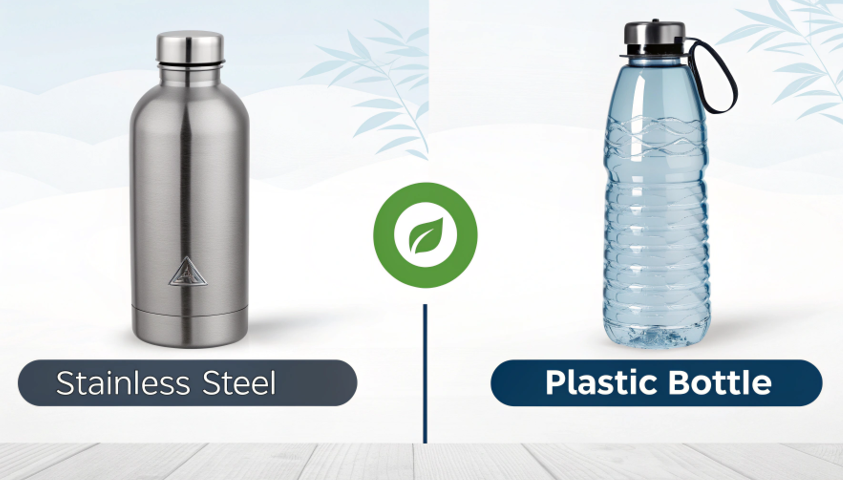
No product is perfect. A smart product developer doesn't hide from disadvantages—they anticipate them and build solutions right into the product and marketing strategy. I've handled thousands of customer feedback reports. The same few issues come up. By addressing them head-on, you can turn a potential weakness into a sign of your brand's honesty and dedication to the customer experience. This builds trust and sets you apart from the competition.
Turning Weaknesses into Strengths
Here is how you can proactively manage the common complaints about stainless steel bottles.
- Dents and Durability: Yes, they dent. It's a fact of life for a rigid material. Instead of it being a surprise, make it part of the story. More importantly, this is a perfect opportunity for an accessory. Offer protective silicone "boots" that slide onto the bottom of the bottle. This adds customization, protects from dents, and creates an additional revenue stream.
- Managing Cost and Weight: A stainless steel bottle is heavier and costs more than a plastic one. Your marketing should never compete on price. Instead, focus on investment and long-term value. Frame the weight as a mark of quality and durability. It feels substantial because it is.
- Tackling the Taste Issue: A slight metallic taste can sometimes be present from the manufacturing process. The solution is simple. Include instructions in your packaging for a one-time initial wash with vinegar and baking soda. This simple step eliminates the issue for 99% of users and shows that you care about their experience from the very first sip.
Conclusion
For a premium 2025 water bottle, choose 18/8 stainless steel. Its proven durability, safety, and superior eco-friendly lifecycle make it the clear winner for building a trustworthy, long-lasting product line.


